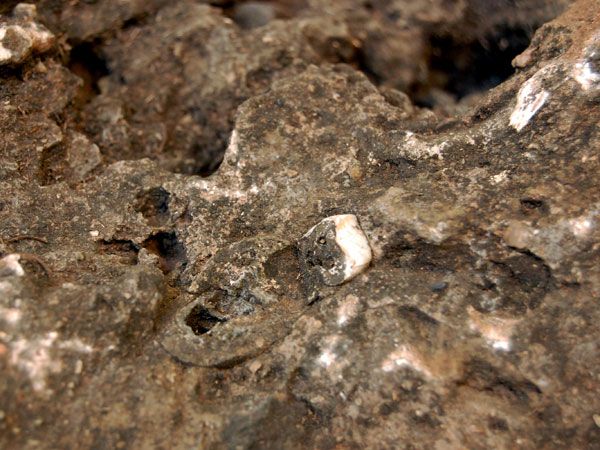Human Ancestor Fossils Hidden in Plain Sight in Lab Rock

Two years ago, scientists announced they had discovered partial skeletons from a new species of human ancestor in a South African cave.
Now, more remains have turned up — in a large rock about 3.3 feet (1 meter) in diameter hiding in plain sight in a laboratory at the University of Witwatersrand in South Africa, the university announced today (June 12).
The rock was found almost three years ago, but the true value of what it contained didn't become apparent until early last month, according to the university.
The rock has been scanned in CT scanner, a device typically used for medical purposes.
"We have discovered parts of a jaw and critical aspects of the body, including what appear to be a complete femur (thigh bone), ribs, vertebrae and other important limb elements," Lee Berger, a paleoanthropologist at the university, said in a statement.
Berger lead the team that discovered this species of early human ancestor in the Malapa cave north of Johannesburg and named it Australopithecus sediba,
Plans are underway to allow the public to watch, either in person or via a live Internet video feed, as the fossils come out of the rock. A laboratory studio, designed in collaboration with the National Geographic Society, is expected to be built at the Maropeng Visitor Centre in the heart of the Cradle of Humanity World Heritage Site in South Africa, according to the announcement.
Sign up for the Live Science daily newsletter now
Get the world’s most fascinating discoveries delivered straight to your inbox.
In 2010, Berger and his colleagues announced the discovery of a new species of human ancestor after finding two partial skeletons, an adult female and a juvenile male, estimated to be nearly 2 million years old. Given its combination of primitive and more modern human-like characteristics, he and colleagues have argued that this species, named Au. sebida, may be the ancestor to the genus Homo, to which modern humans, Homo sapiens, belong.
Other researchers have questioned this, and Au. sebida's position in the human family tree has remained uncertain.
"It's beautifully preserved and sometimes wonderfully completed," Donald Johanson, founding director of the Institute of Human Origins at Arizona State University said of the Au. sebida fossils removed from rock so far. "But at 1.8 or 1.9 million years old, it is really too late to evolve to be an ancestor to Homo."
This is because other fossils belonging to Homo have been also been dated to around this time, he explained.
The latest discovery has yet to be published in a peer-reviewed scientific journal.
Follow Wynne Parry on Twitter @Wynne_ParryorLiveScience @livescience. We're also on Facebook & Google+.












